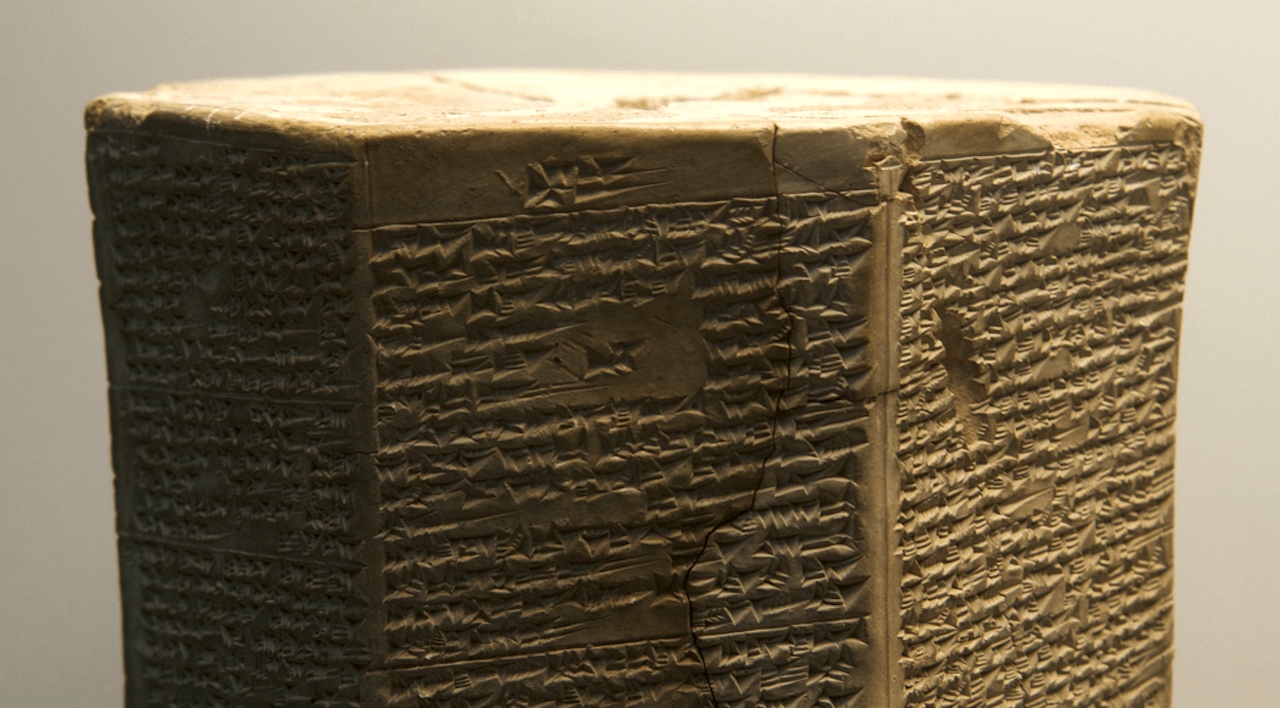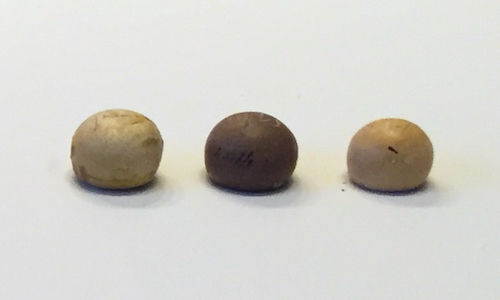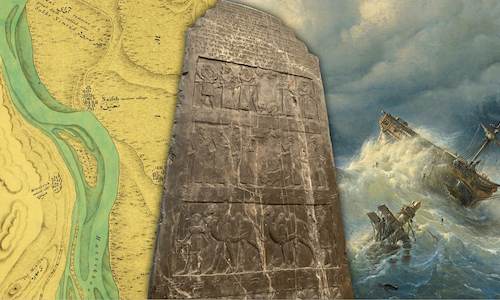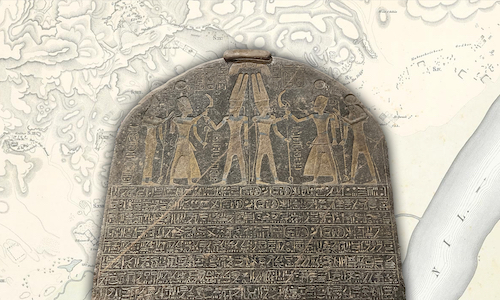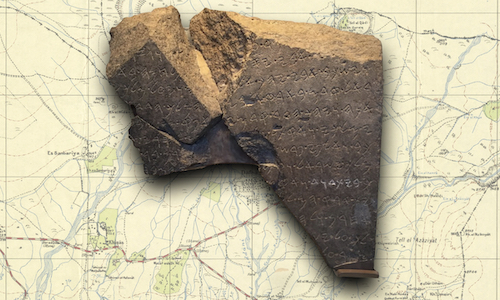Joshua 10 and 11: Genre and the common narrative structure
When we took a closer look at Joshua 10 and 11 one of the things we found was that they follow a similar sequence. It’s as if they’re employ some sort of formula we’re not aware of. In this post we’ll dig into the background to this common narrative structure.
Let’s start by doing what we did previously but this time in more detail. We’ll lay the two chapters next to each other to make the common narrative structure apparent:
| Event | Southern Campaign (ch 10) | Northern Campaign (ch 11) |
|---|---|---|
| Leader of enemy confederacy hears of Israelite threat | Jos 10:1 When King Adoni-zedek of Jerusalem heard how Joshua had taken Ai, and had utterly destroyed it… | Jos 11:1 When King Jabin of Hazor heard of this… |
| Enemy leader calls on local kings | Jos 10:3 So King Adoni-zedek of Jerusalem sent a message to King Hoham of Hebron, to King Piram of Jarmuth, to King Japhia of Lachish, and to King Debir of Eglon… | Jos 11:1–3 he sent to King Jobab of Madon, to the king of Shimron, to the king of Achshaph, and to the kings who were in the northern hill country, and in the Arabah south of Chinneroth, and…. |
| Local kings respond by mobilizing their armies | Jos 10:5 Then the five kings of the Amorites—the king of Jerusalem, the king of Hebron, the king of Jarmuth, the king of Lachish, and the king of Eglon—gathered their forces… | Jos 11:4–5 They came out, with all their troops, a great army, in number like the sand on the seashore, with very many horses and chariots. All these kings joined their forces… |
| Local kings with the armies camp at battleground | Jos 10:5 and went up with all their armies and camped against Gibeon | Jos 11:5 and came and camped together at the waters of Merom, to fight with Israel. |
| Joshua promised divine assistance | Jos 10:8 The LORD said to Joshua, “Do not fear them, for I have handed them over to you; not one of them shall stand before you.” | Jos 11:6 And the LORD said to Joshua, “Do not be afraid of them, for tomorrow at this time I will hand over all of them, slain, to Israel; you shall hamstring their horses, and burn their chariots with fire.” |
| Joshua (and army) move to battleground… | Jos 10:7 So Joshua went up from Gilgal, he and all the fighting force with him, all the mighty warriors. | Jos 11:7 So Joshua came… with all his fighting force, by the waters of Merom |
| …and surprise the enemy | Jos 10:9 So Joshua came upon them suddenly… | Jos 11:7 So Joshua came suddenly upon them… |
| Assisted by Yahweh the Israelites defeat their enemy | Jos 10:10 And the LORD threw them into a panic before Israel, who inflicted a great slaughter on them at Gibeon… | Jos 11:8 And the LORD handed them over to Israel, who attacked them… |
| Remaining enemy are chased a great distance… | Jos 10:10 …chased them by the way of the ascent of Beth-horon… | Jos 11:8 …and chased them as far as Great Sidon and Misrephoth-maim, and eastward as far as the valley of Mizpeh. |
| …during which they are struck by the Israelites chasing them… | Jos 10:10 …and struck them down as far as Azekah and Makkedah. | Jos 11:8 They struck them down… |
| The “Long day” | Jos 10:11–15 | |
| Guard set on 5 kings hiding in cave | Jos 10:16–19 | |
| …until there were none remaining. | Jos 10:20 When Joshua and the Israelites had finished inflicting a very great slaughter on them, until they were wiped out, and when the survivors had entered into the fortified towns… | Jos 11:8 …until they had left no one remaining. |
| Israelite army returns to significant location | Jos 10:21 …all the people returned safe to Joshua in the camp at Makkedah… | Jos 11:10 Joshua turned back at that time, and took Hazor |
| Kings in cave killed | Jos 10:22–27 | |
| Joshua destroys significant location | Jos 10:28 Joshua took Makkedah on that day, and struck it and its king with the edge of the sword; he utterly destroyed every person in it; he left no one remaining. And he did to the king of Makkedah as he had done to the king of Jericho. | Jos 11:10–11 Joshua… took Hazor, and struck its king down with the sword. Before that time Hazor was the head of all those kingdoms. And they put to the sword all who were in it, utterly destroying them; there was no one left who breathed, and he burned Hazor with fire. |
| Summary of enemy towns subsequently destroyed | Jos 10:29–39 | Jos 11:12–15 |
| Summary of territory conquered | Jos 10:40–41 | Jos 11:16–20 |
| Anakim destroyed | Jos 11:21–22 | |
| Divinely assisted complete victory attributed to Joshua | Jos 10:42 Joshua took all these kings and their land at one time, because the LORD God of Israel fought for Israel. | Jos 11:23 So Joshua took the whole land, according to all that the LORD had spoken to Moses; and Joshua gave it for an inheritance to Israel according to their tribal allotments. |
| Return to base camp at Gilgal | Jos 10:43 Then Joshua returned, and all Israel with him, to the camp at Gilgal. |
Hopefully the table makes the common pattern obvious. With a couple of exceptions (in grey), the order of events in the two chapters is practically identical.
So, why are the sequence of events of two completely different campaigns the same?
Amazing coincidence? Or formula?
There are two options:
- By some amazing coincidence both campaigns happened to occur in a pretty much identical sequence
- The the sequence followed by both chapters follows some sort of a formula
The first option can be readily dismissed for a few reasons:
- The causes of the battles were different
- The enemies were different
- The terrain was different
- Both accounts are filled with hyperbole
- The archaeological evidence is firmly against the historicity of either campaign
What about the second option, i.e. that the two conquest accounts follow a formula?
Well, as we’ve previously seen, some parts of Joshua 10 and 11 are stylized, repetitive, and contain much redundant text. The example we looked at was this:
Joshua went (? from A) with All Israel to B, (? laid seige to it) and assaulted it and took it (? that day), and struck it with the edge of the sword (? it’s king) (? and its towns) and utterly destroyed every person in it (? he left no one remaining), just as he’d done to A.
Those verses already follow a formula. It’s already a done deal that the chapters contain fomulaic language. And, what turns out to be true in the details of verses is also true when we zoom out. Just as many of the verses follow a common structure and are therefore practically identical varying only on what town was being annihilated, the two chapters also follow a common narrative structure and only really vary in the details of enemy and location.
Do we find this sort of thing elsewhere? Yes we do. And plenty of it. Let’s take a look at one example.
The Deeds of Tiglath-Pileser I
Considered to be one of the oldest examples of Assyrian annalistic texts, the prism known as The Deeds of Tiglath-Pileser (1114-1076 BCE) is on display at the British Museum. It is one of a number of copies that were found in Kalaa-Shirgat by Hormuzd Rassam1; another more battered and bruised copy sits unlabelled and unloved in an unlit corner of the museum’s Enlightenment Gallery.
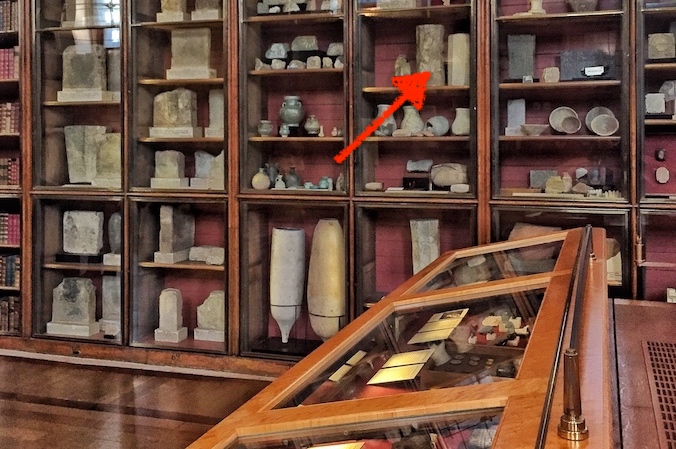
The prism contains a number of Tiglath-Pileser I’s conquest accounts2; let’s compare a couple of them.3
| Event | Episode 9 | Episode 19 |
|---|---|---|
| Overwhelming enemy city | I overwhelmed the lands Sarauš (and) Ammauš, which from ancient times had not known submission, (so that they looked) like ruin hills (created by) the Deluge. | I overwhelmed the city Hunusu, their stronghold, (so that it looked) like a ruin hill (created by) the Deluge. |
| Fighting large enemy army | I fought with their extensive army in Mt. Aruma, and | Violently I fought with their mighty army in city and mountain. |
| Enemy defeated | I brought about their defeat. | I inflicted on them a decisive defeat. I laid low their men-at-arms in the mountains like sheep. |
| Enemy corpses dealt with | The corpses of their men-at-arms I laid out on the mountain ledges like grain heaps. | I cut off their heads like sheep. I made their blood flow into the hollows and plains of the mountains. |
| Enemy cities conquered | I conquered their cities. | (Thus) I conquered that city. |
| Enemy gods carried away | I carried away their gods. | I took their gods; (and) |
| Enemy property taken | I carried off their booty, possessions and property. | I carried off their booty, possessions (and) property. |
| City burned | I burned, razed, and destroyed their cities. | I burned the city. |
| Strong city wall destroyed | The three great walls which were constructed with baked bricks and the entire city I razed (and) destroyed. | |
| City destroyed | I turned (them) into ruin hills and heaps. | I turned (it) into a ruin hill and a heap. I strewed ‘ṣipu’-stones over it. |
| Taxation imposed | I imposed on them the heavy yoke of my lordship. | |
| Vassalage imposed | I made them vassals of Aššur, my lord. | |
| Weird thing about bronze lightning bolts… | I made bronze lightning bolts (and) | |
| I inscribed on them (a description of) the conquest of the lands which by Aššur, my lord, I had conquered, (and) a warning) not to occupy that city and not to rebuild its wall. | ||
| On that (site) I built a house of baked brick. | ||
| I put inside it those bronze lightning bolts. |
Just like what we see in Joshua 10 and 11, the Deeds of Tiglath-Pileser I have two conquest accounts that look very similar, with a few variations. This isn’t an isolated phenomenon – most of the other conquest accounts on the same prism conform to some common narrative structure, e.g. Episodes 4 and 7 also share a formula, though one a little different to that followed by episodes 9 and 19.4 The Deeds of Tiglath-Pileser I aren’t an anomaly; common narrative structures can be seen in Assyrian, Hittite, and Egyptian conquest accounts.5
What was the purpose of these conquest accounts? It certainly wasn’t to narrate the events surrounding campaigns as a series of facts. As Younger explains of the Assyrian accounts,
“The monotonous iteration of the typical syntagms instilled in the ancient public a sense of forced anticipation of the obvious outcome of the event itself; and hence, of the relentless efficacy of the action of the Assyrian king… The use of syntagmic patterning in the narration of each campaign… reflects the Assyrian concept of a girru (campaign). The real sense of a campaign is to be found in its desire for the restoration of order. The enemy has brought about disorder and chaos, and the Assyrian king must reinstate order, righteousness and life. The decisive moment, therefore, is… the submission of all the surrounding minor political centers to the Assyrian king.”6
The aim of these ancient conquest accounts and their common narrative structure wasn’t to explain what happened; it was to communicate via predictable and repetitive structures the inevitable victory of the divinely-approved conquerer against any foe. Any challenge to his power would be systematically and thoroughly squashed. There was no differentiation between enemies – they’d all be defeated.
Conquest accounts were not so much history as they were a threat to potential enemies, and a means to confirm in the minds of the ruler’s subjects that he was the divinely-appointed and all-powerful ruler.
Ancient conquest accounts were propaganda; the medium was the message. As Younger explains elsewhere,
This iterative scheme is not ornamental. It is an important literary convention for communicative purposes.7
What does this mean for Joshua 10 and 11? Are they spun out of whole cloth? Are they entirely made up just to scare potential enemies out of attacking the Israelites?
Telescoping
Just because these accounts follow a formula doesn’t meant that they are of no historical value whatsoever. Younger makes this point at the end of his “Ancient Conquest Accounts”:
We do not wish to give the reader the impression that we believe that none of the data in the ancient texts is trustworthy or that all is rhetoric and stereotyped vocabulary. It is simply that the use of a common transmission code underlying the ancient texts must be taken into account; the commonality of such set language does not negate the fact that a war took place, that someone won or that the army performed certain specific actions.8
After all, the description of the destruction of Hazor in Jos 11:10-11 matches the archaeological evidence of its destruction very closely.9 However, the archaeological evidence for the destruction of other Canaanite towns is that they came to their end anywhere between 25 to 100 years after Hazor was burned.10
How does this relate to the conquest accounts? Ancient Near Eastern conquest accounts are telescoped; a concept Malamat explains as being,
“…the compression of a string of events into a unified narrative of a relatively brief time-span. Long, involved campaigns were chronologically foreshortened by late redactors, thereby creating in retrospect a historical account of artificial simplicity.”11
I.e. records of battles/skirmishes that took place over many years were massaged into a single campaign, exaggerated beyond recognition, and made to follow a common narrative structure.
Joshua 10 and 11 fit the bill very well: they follow a common narrative structure, and they mention the destruction of towns that archaeological evidence tells us were taken or destroyed over the space of around 200 years.
Conclusion
What does this mean for our chapters? Well, they clearly were never intended to be plain historical records, and to read them as such is to miss the purpose of their author. Though they contain kernels of historicity they are ancient Near Eastern conquest accounts and were written for the same reason as other conquest accounts were written: they’re propaganda.
Next time we’ll take a look at the final feature in our list: Joshua 10 and 11’s focus on Joshua.
Further reading
Featured image
The Annals of Tiglath Pileser I on display in the British Museum.
Footnotes
-
Hormuzd Rassam, Asshur and the Land of Nimrod (Curts & Jennings, 1897), 20. ↩
-
Daniel David Luckenbill, Ancient Records of Assyria and Babylonia (Illinois, University of Chicago Press, 1926), 72-91. ↩
-
Translations from K. Lawson Younger Jr., Ancient Conquest Accounts: A Study in Ancient Near Eastern and Biblical History Writing (vol. 98; Journal for the Study of the Old Testament Supplement Series; Sheffield: Sheffield Academic Press, 1990), 80-81. ↩
-
Ibid., 82-89. ↩
-
Ibid., 59-194. ↩
-
Ibid., 123. ↩
-
Ibid., 199. ↩
-
Ibid., 266. ↩
-
A topic we’ll cover in the future. ↩
-
A topic for another day. Meanwhile, see Norman K. Gottwald, The Hebrew Bible: A Socio-Literary Introduction (Philadelphia: Fortress Press, 1985), 263. ↩
-
Abraham Malamat, History of Biblical Israel – Major problems and minor issues (Brill, 2001), 69. ↩
